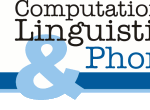Computational Linguistics Colloquium
Thursday, 18 April 2013, 16:15
Conference Room, Building C7.4
Pronunciation training with a computer-assisted tutor: a universal solution to a local challenge?
Jacque KoremanNorwegian University of Science and Technology
Department for Language and Communication Studies To become an active user of a foreign language, pronunciation is a key skill which lays the foundation for effective communication. Pronunciation problems typically vary depending on the native language of the learner. This requires an individualized approach, which often is not feasible in typical classroom situations.
Language labs do offer the possibility of individual instruction. At NTNU, we have developed a Computer-Assisted Listening and Speaking Tutor (CALST <http://calst.hf.ntnu.no>) for Norwegian. Because Norwegian does not have an accepted pronunciation standard, learners must select one dialect as their pronunciation target, while becoming perceptually familiar with all other dialects. I shall demonstrate how this local challenge is solved in different types of vocabulary training exercises (Listen&Click, Listen&Speak, Listen&Write) as well as two different types of pronunciation exercises (ABX, Minimal pairs/sets).
CALST is based on a universal contrastive analysis of the segment inventories of over 500 languages. Contrastive analysis results are visualized as IPA charts in our L1–L2map <http://calst.hf.ntnu.no/L1-L2map> tool for comparing languages. Segments are color-coded, with red sound symbols indicating L2 segments which do not occur in the learner’s L1 and may therefore be challenging. L1–L2map can be used interactively or as a server-client system which returns information to a computer-assisted pronunciation training (CAPT) system. I shall explain how the system can be integrated into CAPT systems for other languages.
Unfamiliar L2 segments are linked to sound contrast exercises in CALST. The list of exercises is set up on the basis of experience collected from classroom practice. But language learners with different native languages are known to make different substitutions for unfamiliar L2 sounds. I shall present a pragmatic approach to differential substitutions and discuss how we can select only sound contrast exercises for substitutions users with a given L1 actually make. This makes the learning trajectory more efficient for the CALST user.
If you would like to meet with the speaker, please contact
Jürgein Trouvain.

